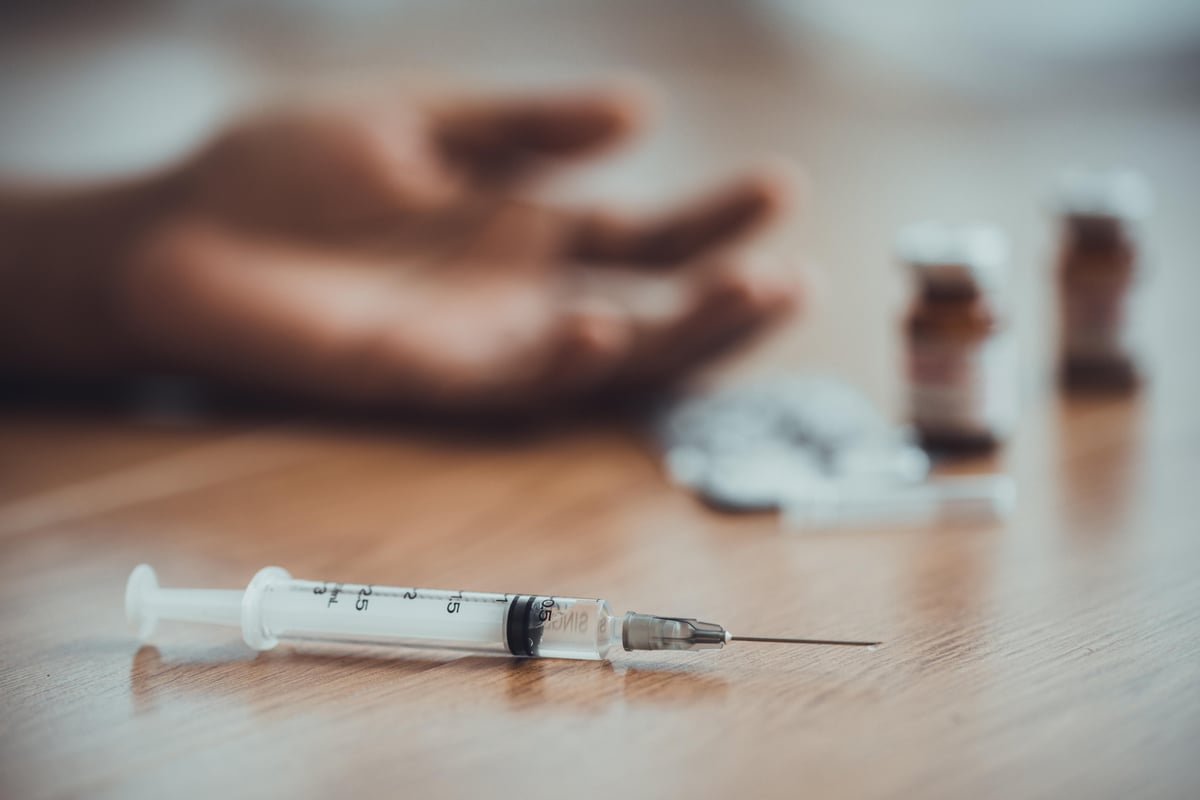Fatal Heart Infections Linked to Opioid Abuse Have Tripled Among Young Americans

WEDNESDAY, Nov. 9, 2022 (HealthDay News) -- The U.S. opioid epidemic has been heartbreaking — literally.
Young adults’ risk of dying from a devastating infection of the heart has doubled to tripled in the United States during the past two decades, a new study reports.
Researchers ascribe the increase in fatal heart infections to the growing number of people between 15 and 44 who are injecting opioid drugs.
“We found that people who inject drugs comprise a bigger percentage of the deaths from infective endocarditis, compared to 20 years ago,” said senior researcher Dr. Polydoros Kampaktsis, an assistant professor with Columbia University's division of cardiology, in New York City.
“This is more notable among the younger population,” he added.
Endocarditis occurs when the lining of your heart valves and heart chambers — the endocardium — become infected with germs, typically bacteria, that enter your bloodstream.
If left untreated, the infection can “destroy the heart,” said Dr. Georgios Syros, director of arrhythmia services at Mount Sinai Queens in New York City.
“You can have strokes. You can have leaking valves. You may have to do open-heart surgery to replace those valves,” Syros said. “It’s devastating.”
The death rate for infective endocarditis among people 15 to 44 doubled between 1999 and 2020, increasing from 0.3 deaths to 0.6 deaths per 100,000 people, according to the researchers’ analysis of federal mortality data.
Worse, the endocarditis death rate tripled for people 15 to 34, rising from 0.1 to 0.3 deaths per 100,000 people, the findings showed.
This occurred even as the endocarditis death rate for the entire U.S. population fell, from 2.1 per 100,000 people in 1999 to 1.8 in 2020.
Overall, young people comprised 10% of all endocarditis deaths in 2020, an increase from less than 7% in 1999, the investigators found.
Looking more closely at the statistics, the research team concluded the opioid epidemic is likely responsible for the rise in endocarditis deaths among the young.
People who inject drugs constitute an increasing percentage of all those who die from endocarditis, rising from 1.1% in 1999 to 3% in 2020.
Among young people, intravenous drug users constituted nearly 20% of endocarditis deaths in 2020, up from about 10% in 1999, according to the report.
“This is a continuation of the story of death by despair that we have seen. It is unfortunate that these data and findings confirm what we have been seeing clinically for years,” said Dr. Wael Jaber, a cardiologist with the Cleveland Clinic in Ohio.
Humans have layers upon layers of skin and immune defenses to prevent germs from freely circulating in the bloodstream, but drug users who shoot up bypass all that protection, said Syros and Kampaktsis.
“Intravenous injection can introduce bacteria directly to the blood circulation,” Kampaktsis explained. “Bacteria can be present in the skin or the needle. Once the needle enters the vein, it allows bacteria to enter the circulation and travel to the heart.”
The risk is even greater given that drug users often inject themselves regularly, Syros added.
“These guys repeatedly breach the barrier,” Syros said. “They're not injecting once in a lifetime. They are injecting perpetually, and they're also sharing needles. That multiplies the risk of getting exposed to something that can cause infective endocarditis.”
Treatment options are limited, typically involving heavy doses of intravenous antibiotics, the experts said.
"'Sterilizing’ the bloodstream is often difficult and the risk of infection return is high, especially with continuous drug use,” Jaber said.
If the infection has damaged the heart valves, high-risk open-heart surgery might be needed to replace them with prosthetic valves, he noted.
“There really is no good way to ‘cure’ this heart complication,” Jaber said.
Needle exchange programs are likely the only way to immediately address this risk to heart health, Syros said.
“We should definitely try to give them clean syringes,” Syros said. “If you want to use, please use a clean syringe.”
Substance abuse soared during the COVID pandemic, with an increase in fatal drug overdoses of nearly 30% during the first full year of the crisis, Syros added.
“This is something that I have personally witnessed in the hospital,” Syros said. “There were people that were hovering there — before the pandemic, they were on the verge of using/not using drugs, drinking/not drinking alcohol. Because of the pandemic, it was like a slap, and then we saw numbers rising very, very, very fast.”
Until the United States adopts cultural and policy changes to effectively curb opioid use, Syros believes cases of endocarditis among young drug users will continue to climb.
“I think we’re going to have a surge in the years to come, following the increase in people taking opiates during COVID,” Syros said. “I believe there will be a wave of infective endocarditis affecting the young in the years after the pandemic. It’s going to go up.”
The new study was published Nov. 9 in the Journal of Internal Medicine.
More information
The Cleveland Clinic has more on endocarditis.
SOURCES: Polydoros Kampaktsis, MD, PhD, assistant professor, division of cardiology, Columbia University, Irving Medical Center, New York City; Georgios Syros, MD, director, arrhythmia services, Mount Sinai Queens, New York City; Wael Jaber, MD, cardiologist, Cleveland Clinic, Ohio; Journal of Internal Medicine, Nov. 9, 2022
Related Posts
Want to Lose Weight? Here Are the Best Exercises to Shed Pounds
MONDAY, Jan. 23, 2023 (HealthDay News) -- When it comes to picking the best...
Melatonin May Reduce Risk for Intentional Self-Harm in Female Teens
MONDAY, April 3, 2023 (HealthDay News) -- For female adolescents with...
Early Glycemic Control May Cut CV Risk in Type 2 Diabetes
WEDNESDAY, May 18, 2022 (HealthDay News) -- Early control of glycated hemoglobin...
